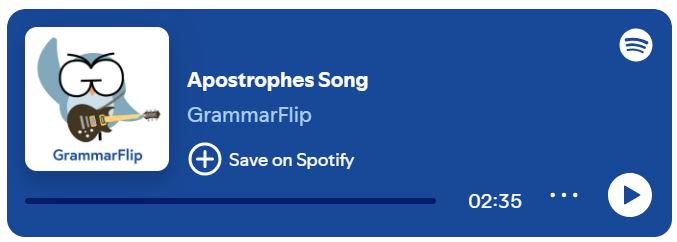How Do You Use Apostrophes to Show Individual Ownership vs. Joint Ownership?
Apostrophes are punctuation marks that can be used to show possession. When a compound subject shows possession, the two or more subjects can have either joint or individual ownership of the object. One apostrophe on the last subject indicates joint ownership, which means that all members of the compound subject own the object. When each member of the compound subject has its own apostrophe, they have individual ownership, meaning that each member of the compound subject has its own object.
Some examples of apostrophes with individual ownership vs. joint ownership would be the following:
Joint Ownership
Foster and Lydia’s first class of the day is math.
Eunice and Tony’s parents are both soccer coaches.
Marcel and Lacy’s neighborhood is having an egg hunt on Saturday.
Because there is joint ownership, only one apostrophe and -s is needed at end of the last owner.
Individual Ownership
Kyree’s and Everett’s fathers went to high school together.
Christina’s and Amir’s bikes were both locked up in front of the library.
Judy’s, Marie’s, and Hector’s quizzes all had perfect scores.
Because there is individual ownership, an apostrophe and -s is needed at end of both of the owners.
Long-Form Videos: Apostrophes with Individual vs. Joint Ownership
Long-form instructional video lessons allow students to engage with grammar concepts in more depth and detail.
This format provides students with a stronger foundation and a more comprehensive understanding of apostrophes with individual and joint ownership.
Short-Form Videos: Apostrophes with Individual vs. Joint Ownership
Short-form videos are an excellent way to review grammar concepts. Our two-minute instructional videos help students review the concept of apostrophes with individual ownership vs. joint ownership to further solidify their understanding.
Memorable Images: Apostrophes with Individual vs. Joint Ownership
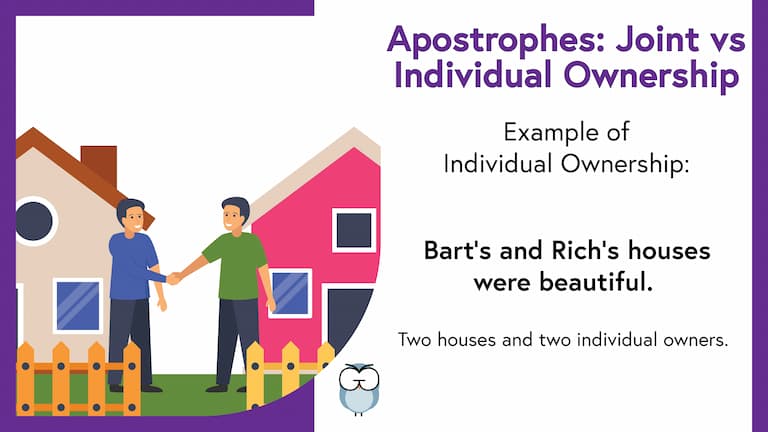
The use of images to connect visual cues with concepts makes it simpler for students to grasp and remember key ideas. GrammarFlip’s memorable images create visual associations that make apostrohpes with individual ownership vs. joint ownership more engaging and easier to retain.
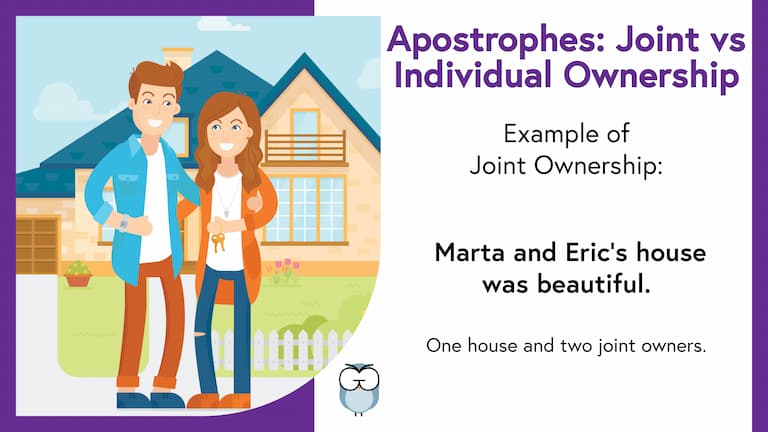
Definition Cards: Apostrophes with Individual vs. Joint Ownership
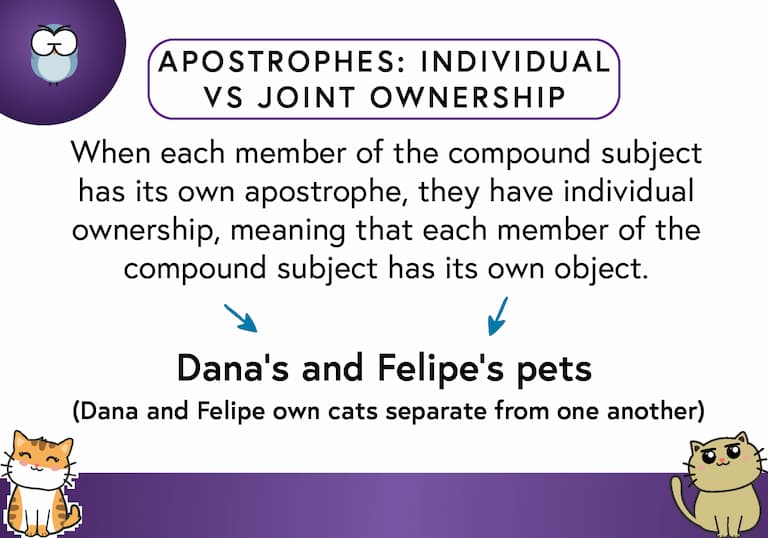
Definition cards reinforce grammar concepts by providing clear and concise explanations that students can easily reference for quick review and better retention. GrammarFlip’s definintion cards help students review the concept of apostrophes with individual ownership vs. joint ownership to further solidify their understanding.
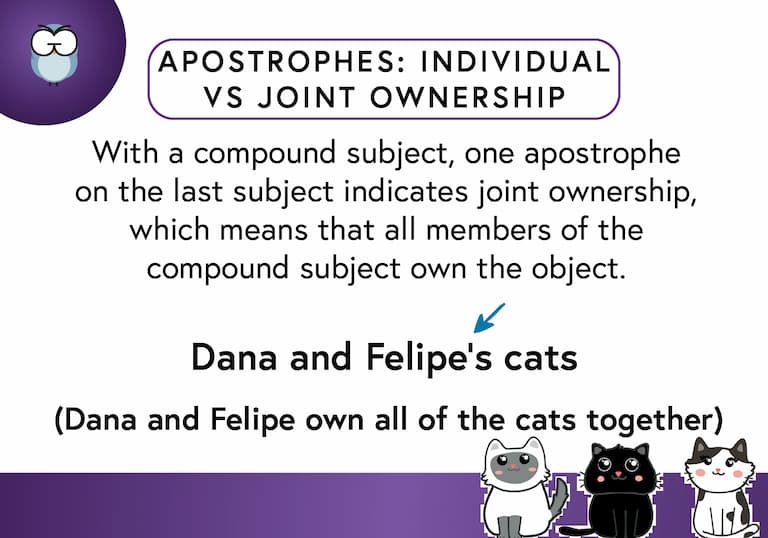
Music: Basic Apostrophe Rules
Learn grammar concepts through music! The unique verses and catchy chorus in our “Apostrophes Song” will help your students further understand basic apostrophe rules. Listen for yourself and see if you don’t walk away singing this song to yourself!
Listen to GrammarFlip Music via Spotify, Apple, or Amazon!
Music Videos: Basic Apostrophe Rules
Music videos make grammar concepts more engaging and memorable by combining rhythm, visuals, and repetition to reinforce learning. GrammarFlip’s music videos help students retain the concept of basic apostrophe rules more effectively while making the learning process fun and interactive.
Download a Free Worksheet on Apostrophes: Individual vs. Joint Ownership!
Click the image below to download your free worksheet on apostrohpes with individual vs. joint ownership!
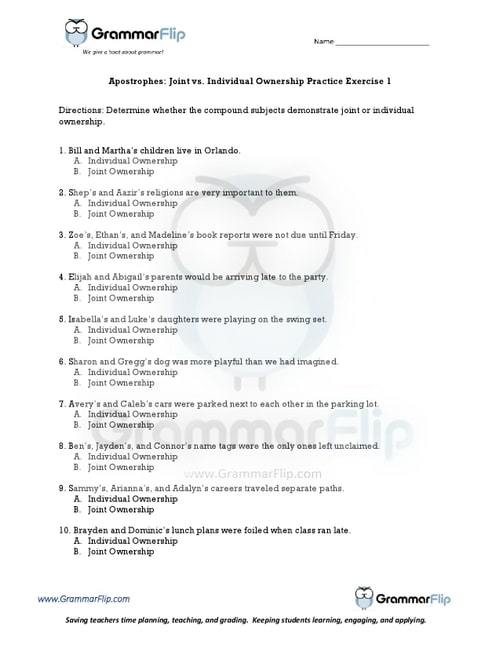
Need something more than just worksheets for your grammar instruction?
Explore More GrammarFlip Lessons!
Parts of Speech lessons provide the building blocks of grammar. GrammarFlip covers these topics in detail to ensure a solid foundation is built. First time learners and students seeking to review the parts of speech can both benefit from the instructional videos and slide show reviews.
Parts of the Sentence lessons are critical for understanding how the parts of speech function in language construction. From the basic to the advanced, these lessons will cover a wide range of grammar topics that can be used in any grade level or classroom.
Mechanics and Usage lessons equip students with the necessary skills to communicate clearly to all audiences. With a focus on the application of these concepts in student writing, these lessons tie together both simple constructions of grammar as well as the more complex such that any age or skill level of student will benefit.

